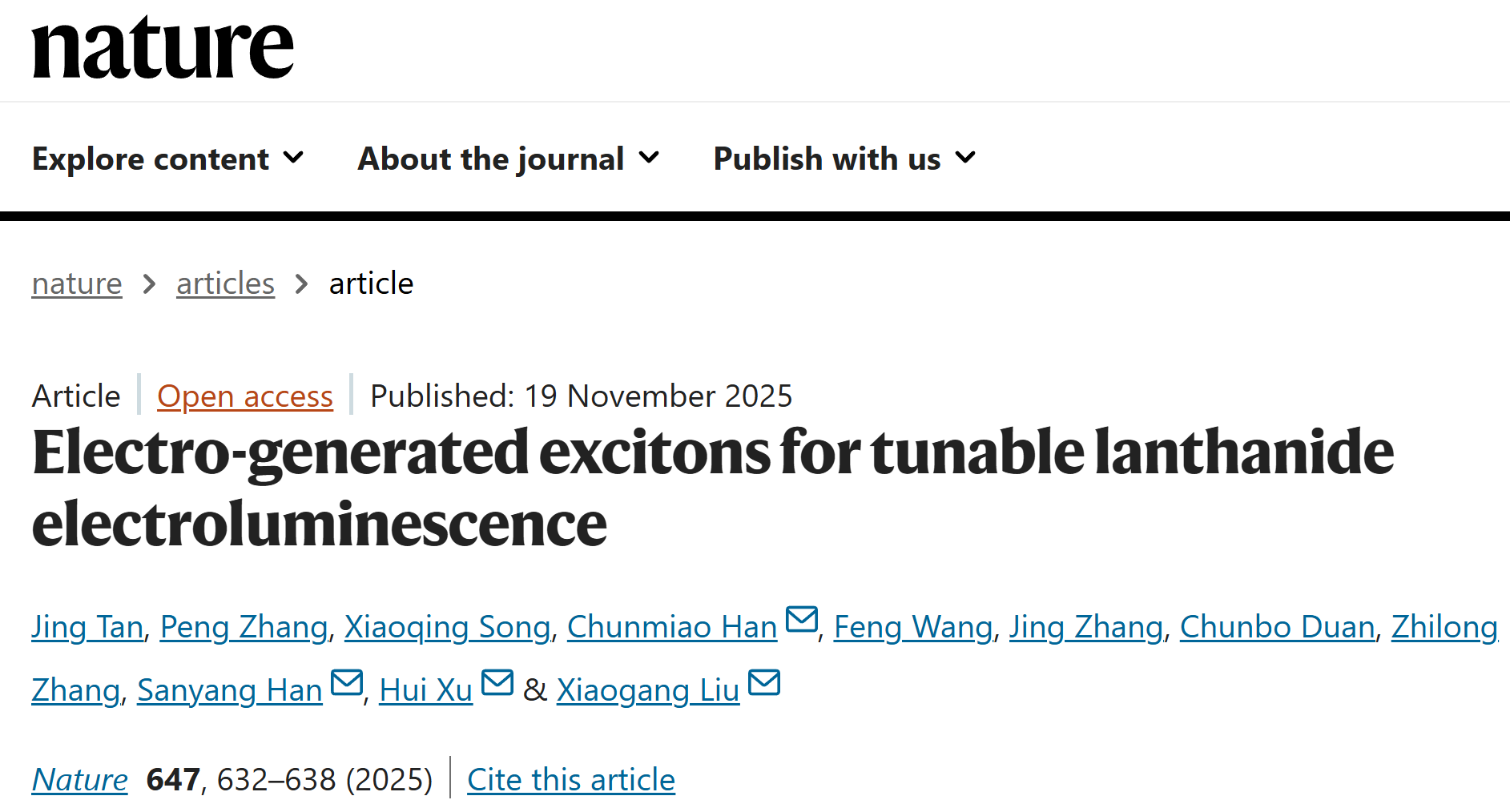Recently, the breakthrough research results jointly completed by Heilongjiang University, Tsinghua University and the National University of Singapore were officially published in Nature, successfully overcoming the world's difficult problem of efficient electroluminescence of insulating rare earth nanocrystals. This research provides key core technical support for realizing the strategic transformation of my country's rare earth resources from "raw material export" to "high value-added technology export".

△Screenshot of "Nature" website article
Rare earths are irreplaceable strategic resources and are known as "industrial vitamins". my country has advantages in rare earth resource reserves and smelting, but it still faces industrial bottlenecks in terminal high-end functional materials and devices. Although lanthanide-doped nanocrystals have excellent properties as ideal luminescent materials such as high color purity and good stability, they cannot be directly lit by current due to their inherent "insulating" properties, and their high-value optoelectronic applications have been hindered for a long time.
Faced with this bottleneck that restricts the advancement of rare earth materials into high-end applications, the research team pioneered a sensitization strategy for organic semiconductors, using functionalized organic ligands as "photoelectric bridges" to successfully transfer energy to insulating rare earth nanocrystals accurately and efficiently, achieving efficient luminescence driven by current.

△ Schematic diagram of organic-inorganic hybrid light-emitting unit design and energy transfer mechanism (picture provided by the research team)
This technology shows great application potential: the efficiency of electroluminescent devices is increased by 76 times, and full-spectrum luminescence can be achieved in a single device through rare earth ion control. This marks a key breakthrough for my country in the field of high-end optoelectronic applications of rare earths, and provides a new material system for the development of independent and controllable ultra-high-definition displays, near-infrared communications, biomedicine and other new generation information technologies.

This breakthrough has successfully opened up a technical path to transform the properties of rare earth materials into high-end device functions, making a substantial contribution to improving the independent innovation capabilities of my country's rare earth industry chain and the added value of end products.
(Headquarters reporter Wei Wenwen)